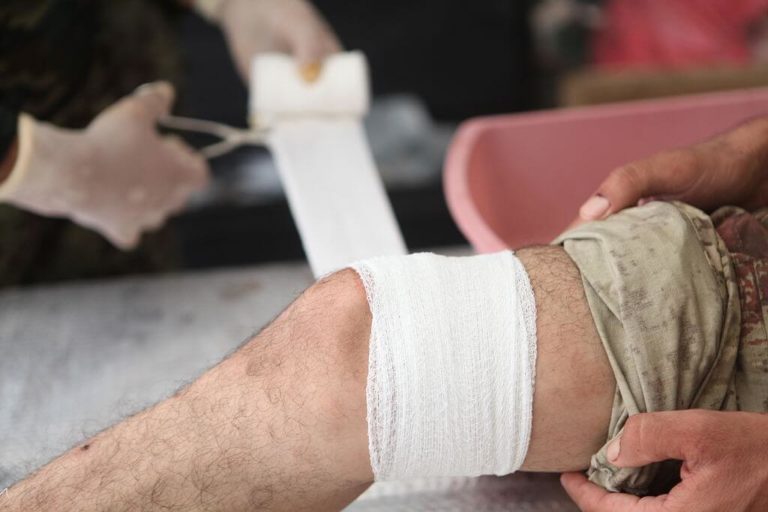VA Disability Ratings for Shrapnel Wounds

CCK Law: Our Vital Role in Veterans Law
What is a shrapnel wound?
Generally speaking, shrapnel refers to sharp, dangerous shards of metal. In the context of VA, shrapnel typically include bomb, mine, or gun shell fragments. As such, shrapnel wounds are injuries due to these metal fragments, originating from some sort of explosive device. Shrapnel wounds are commonly incurred during combat. However, suffering a shrapnel wound during service can cause significant impairment later in life. Therefore, VA offers service-connected compensation for shrapnel wounds based on the appropriate disability rating criteria.
How does VA rate shrapnel wounds?
When assigning disability ratings for shrapnel wounds, VA uses both the Evaluation of Muscle Disabilities under 38 CFR 4.56 and the Schedule of Ratings for Muscle Injuries under 38 CFR 4.73. Specifically, the Evaluation of Muscle Disabilities outlines the cardinal signs and symptoms of muscle disabilities that are considered for VA rating purposes. Such signs and symptoms include: loss of power, weakness, lowered threshold of fatigue, fatigue-pain, impairment of coordination, and uncertainty of movement. Furthermore, the Schedule of Ratings for Muscle Injuries classifies shrapnel wounds as slight, moderate, moderately severe, or severe. The criteria for each are as follows:
- Slight – simple wound without debridement or infection; record of superficial wound with brief treatment and return to duty; no cardinal signs or symptoms; minimal scar; no evidence of atrophy or metallic fragments retained in muscle tissue; and no functional impairment
- Moderate – through and through or deep penetrating wound of short track from single bullet, small shell, or shrapnel fragment; without explosive effect of high velocity missile, residuals of debridement or prolonged infection; evidence of in-service treatment of wound; record of consistent complaint of one or more cardinal signs; entrance and (if present) exit scars; some loss of muscle substance and retained foreign bodies; some functional impairment
- Moderately severe – through and through or deep penetrating sound with debridement and prolonged infection; hospitalization for prolonged treatment of wound; consistent complaint of cardinal symptoms; entrance and (If present) exit wounds through one or more muscle groups; evidence of inability to keep up with work requirements; impairment in strength and endurance
- Severe – through and through or deep penetrating wound due to high-velocity missile with shattering bone fracture or open communited fracture with extensive debridement and prolonged infection; hospitalization for prolonged treatment of wound; consistent complaint of cardinal signs; inability to keep up with work requirements; scars indicating wide damage to muscle groups; loss of muscle in wound area; muscles swell and harden abnormally; severe impairment of function in regards to strength, endurance, or coordinated movements
The corresponding percentages are divided into two categories based on whether the shrapnel wound affects a veteran’s dominant or nondominant muscular region. Additionally, the percentages differ depending on which muscle region is affected. For VA rating purposes, muscles are divided into the following five regions and evaluated accordingly:
- Shoulder Girdle and Arm
- Forearm and Hand
- Foot and Leg
- Pelvic girdle and thigh
- Torso and Neck
Separate Ratings for Muscle Injuries vs. Pyramiding
When filing claims to receive VA disability ratings for shrapnel wounds, it is important for veterans to be aware of pyramiding. Veterans cannot receive compensation more than once for the same disability, or the same manifestation of symptoms. Namely, a veteran might have two distinct disabilities with the same symptoms, but cannot receive separate ratings for each. In turn, the veteran will only be compensated for one of those disabilities. In dealing with shrapnel wounds, it is important for veterans to look at the specific manifestations of the injury. If there is impairment not accounted for by the muscle injury rating, then he or she may be entitled to a separate rating for that impairment.
About the Author
Share this Post
